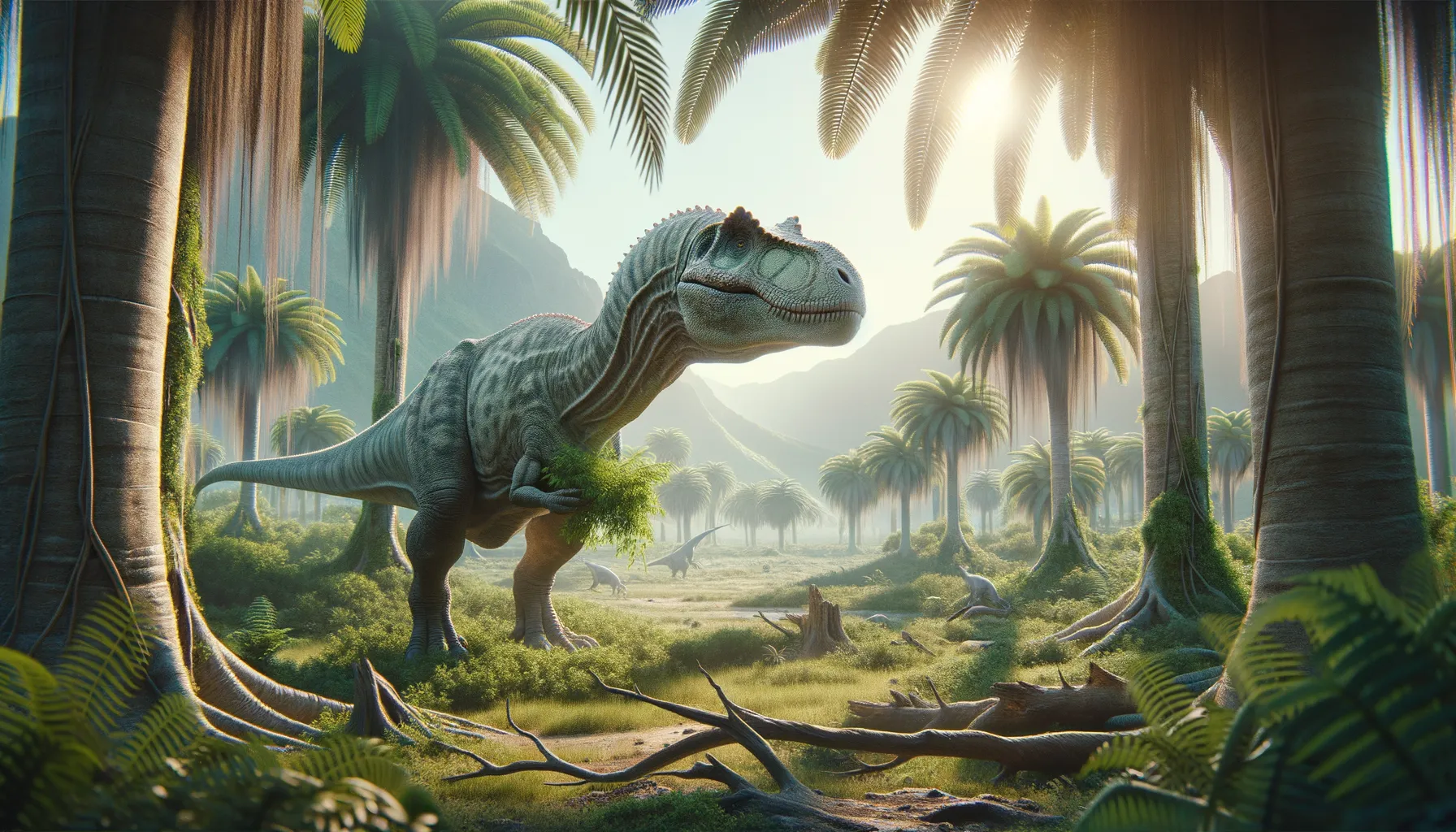
Ohmdenosaurus
A gentle giant from the ancient world.
Period
Jurassic
Length
Roughly 10 meters long.
Height
Approximately 4 meters tall.
Weight
Around 5-10 tons.
Ohmdenosaurus was a relatively small sauropod dinosaur from the Jurassic period. Its remains were first discovered in Germany, revealing a creature adapted to a herbivorous lifestyle. Although not much is known about its detailed behavior due to limited fossil evidence, Ohmdenosaurus gives insight into the diverse world of dinosaurs that thrived millions of years ago. Its physical features suggest a large, yet gentle giant that roamed prehistoric landscapes.
Diet
Ohmdenosaurus was herbivorous, feeding primarily on plants. It likely consumed a variety of vegetation available in its habitat to sustain its large size. Its long neck would have been useful for reaching high branches and other plant materials.
Hunting
Being a herbivore, Ohmdenosaurus did not hunt. Instead, it spent much of its time foraging for food across the landscape. Its social behavior might have included grazing in groups to protect themselves from predators.
Environmental challenges
Ohmdenosaurus would have faced environmental challenges like changing climates and competition for food. Natural disasters, such as volcanic activity, could have altered its habitat. Predation from carnivorous dinosaurs was also a constant threat, requiring adaptations like traveling in herds for safety.
Speed
Likely slow due to its size and build.
Lifespan
Estimated to be a few decades long.
First discovery
Discovered in Germany in the 1970s.
Fun Facts
- Ohmdenosaurus was a small sauropod dinosaur that lived during the Early Jurassic period, around 183 million years ago.
- It was discovered in the Posidonia Shale in Germany, a site famous for its well-preserved fossils.
- Unlike many other sauropods, Ohmdenosaurus was relatively small, estimated to be only about 4 meters (13 feet) long.
- Its name, Ohmdenosaurus, is derived from the town of Ohmden in Germany, near where its fossils were found.
- The Ohmdenosaurus is known for its distinctively shaped vertebrae, which help paleontologists identify its fossils.
- Fossils of Ohmdenosaurus have provided insights into the early evolution of long-necked dinosaurs.
- Despite its small size among sauropods, Ohmdenosaurus was still a herbivore and feasted on lush vegetation.
Growth and Development
Ohmdenosaurus would have experienced life stages from hatchling to adult. It would have grown continuously, developing larger body sizes to cope with environmental pressures. Growth rates were influenced by the availability of food sources and environmental conditions.
Habitat
This dinosaur likely lived in lush environments with abundant vegetation. Its habitat would have included forests and open areas where it could graze. The presence of water sources such as rivers would have been crucial for its survival.
Interaction with other species
Ohmdenosaurus might have coexisted with other herbivorous dinosaurs, sharing resources and space. It would have needed to avoid predators like theropods that hunted in the same regions. Its interactions were likely a mix of competition and coexistence.
Natural lifespan
Ohmdenosaurus had a natural lifespan of several decades.
Reproduction
Ohmdenosaurus would have laid eggs, similar to other sauropods. Nesting habits might have included selecting safe areas with ample foliage to hide eggs from predators. Parental care post-hatching is uncertain but might have included some protective behaviors.
Social behaviour
This dinosaur potentially lived in groups, enhancing its survival against predators. Social structures might have included age hierarchies, with adults leading their young to food sources. Group living provided mutual protection and assistance among its members.
Fossil locations
Fossils of Ohmdenosaurus have primarily been found in Germany, which provides insight into its distribution and habitat preferences during the Jurassic period. These findings are limited but significant for understanding sauropod diversity in Europe.
